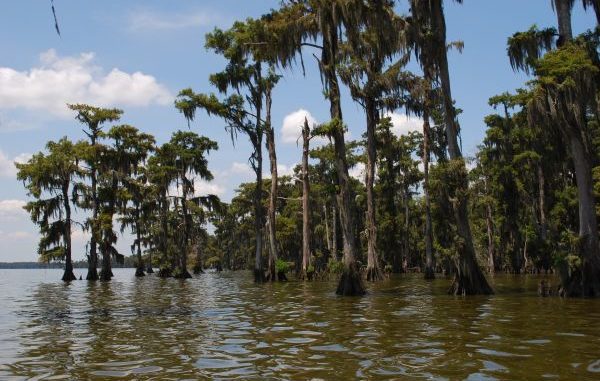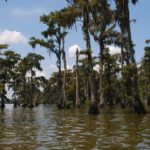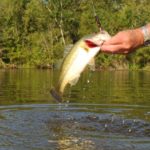
A personal history
The 14-inch-minimum-size limit on all black bass — both largemouth and spotted — in the Atchafalaya Basin, Lakes Verret, Palourde, Fausse Point/Dauterive areas has been in effect since the aftermath of Hurricane Andrew in 1992.
For the first 16 years of my career as an LSU AgCenter/Sea Grant fisheries biologist, I taught to the angling public the biological philosophy of the Louisiana Department of Wildlife and Fisheries regarding management of largemouth bass with minimum size restrictions.
Namely, that in areas of good recruitment (successful spawns) minimum-size-limit restrictions were unnecessary and could even be negative. This dictum applied pretty much statewide, but most particularly in overflow areas — like the Atchafalaya Basin.
Competition between the large numbers of young bass could reduce growth and result in large numbers of fish “piled up” at a size smaller than the minimum legal harvest size.
Then came Hurricane Andrew.
The massive storm resulted in low oxygen conditions at the hottest time of the year in Southcentral Louisiana. Untold millions of freshwater fish of every species were floating belly up within a few days. Public and political hue and cry to do something was loud.
In response, the LDWF’s Inland Fisheries Division proposed a rule limiting harvest of bass in the basin to 14 inches or larger. No rules for any other species were proposed, in spite of their populations being just as hard hit as were those of bass.
The rule was to last three years.
Concerned about the sudden reversal of management philosophy, I met with the administrator of the division at the time.
In a nutshell, I was informed that — while fisheries populations, including bass, would recover without any action — he wanted to avoid the political pressure that the Marine Fisheries Division of the department felt to make changes (which they resisted successfully) in speckled trout and redfish populations after the incredible fish kill produced by the great freeze of 1989.
Besides, I was told, a three-year rule wouldn’t hurt anything in the long run. I expressed concern that the massive fish population bounce-back that was bound to occur after the storm would be attributed to the rule change, and that anglers would never be willing to let it go.
I remember clearly the administrator’s exact words.
“That will not happen,” he said. “I personally guarantee it.”
I left the LDWF building with those words spinning in my head.
Now, 20 years later the rule is still in effect. And it is still controversial.
Longtime Spillway angler Jim Looney has his opinions.
“They need to let people bring home some fish,” he said. “It has probably helped fishing in this area, but only to a point.
“I am like a lot of fishermen: I like to eat bass. But you talk to tournament fishermen, they want you to throw everything back.”
He laughed, and offered his thoughts on why the rule is still in effect.
“They [tournament fishermen] are better organized than those who like to bring a few fish home, and their voice is the one that is heard,” he said.

